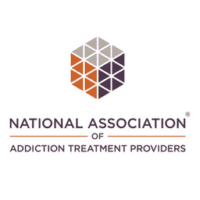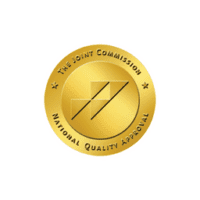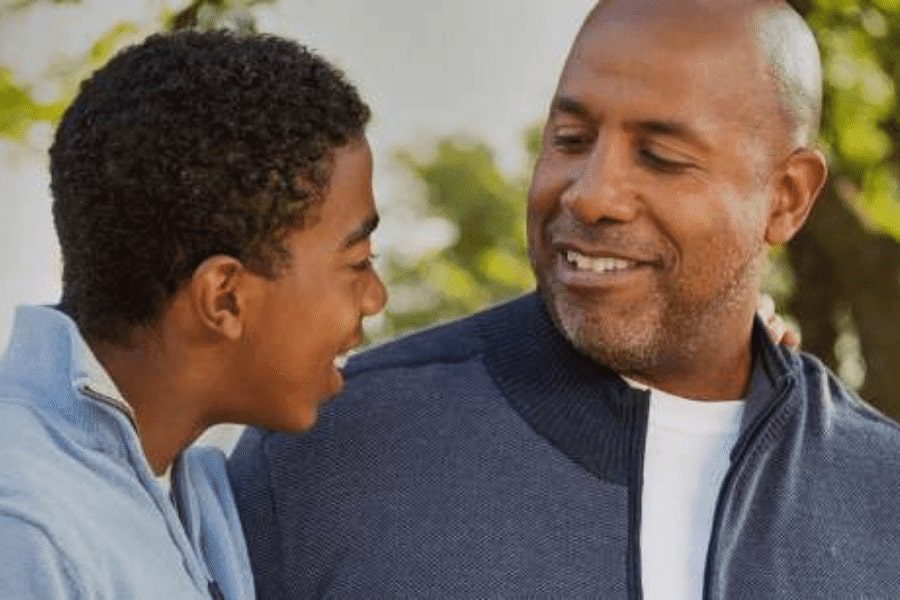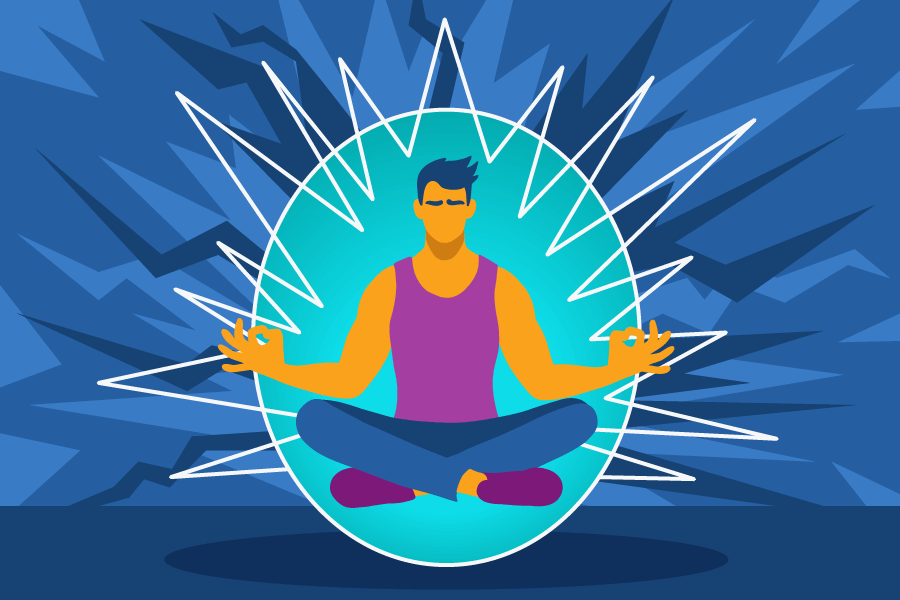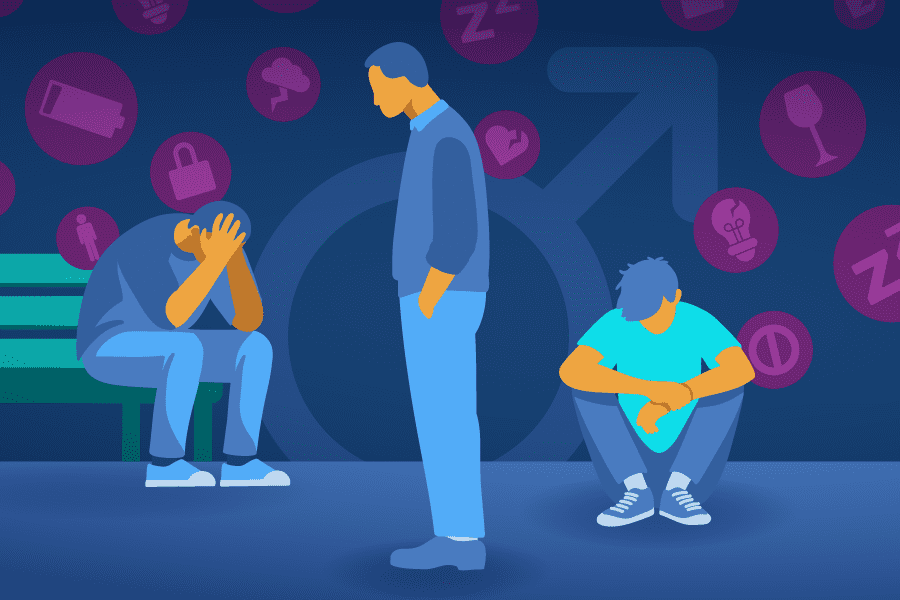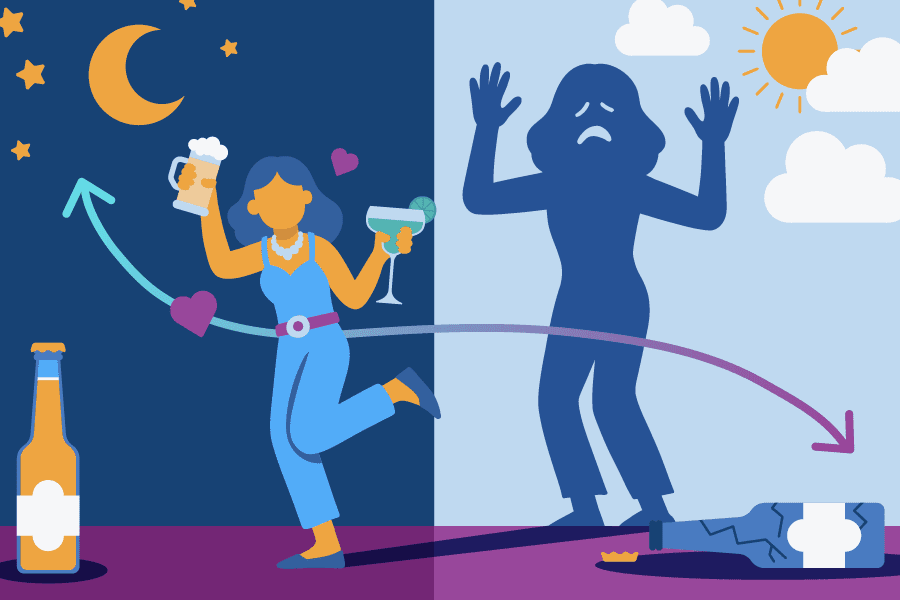Dialectical Behavior Therapy
Dialectical behavior therapy, or DBT, is a type of psychotherapy that was originally designed to treat those who are chronically suicidal or have borderline personality disorder (BPD).
Today, DBT is recognized as an effective therapeutic approach for many forms of mental illness. The first part of its name comes from dialectics: The practice of changing our perspective of things that appear to be opposites, but are in fact each crucial to our understanding of the other. In practice, this most often refers to the balance of acceptance and change.
DBT is broken down into four main skills:
Mindfulness: Mindfulness helps us focus our attention on the present moment, noticing what’s going on both within and outside of ourselves, with the goal of becoming and staying more centered.
Interpersonal Effectiveness: This helps us build, maintain and improve relationships – both with people we’re close to and with those we’re just getting to know.
Emotion Regulation: Though to a certain extent, we are who we are and our feelings are part of us, we can in fact learn to improve control over our emotions, helping to bring them into better balance.
Distress Tolerance: This encourages higher tolerance and better handling of crisis situations, as well as accepting things as they are even though they may not be what we want.
Here’s how each of these skills connect with the overall theme of acceptance and change:

How DBT Works
One example of DBT, and one of its foundational skills, is the Wise Mind. According to dialectical behavior therapy, we operate within three states of mind: the Emotion Mind, the Reasonable Mind and the Wise Mind.
By using various charts and real-life examples, therapists guide participants through an understanding of their choices and what state of mind was driving those actions. This therapeutic practice also relies heavily on homework and the application of learned skills in daily life.
Is DBT Effective?
There is substantial evidence to support DBT’s ability to treat borderline personality, chronic suicidality, depression, substance use disorders and eating disorders.
One study on the effectiveness of DBT for eating disorder sufferers showed that participants who received DBT skills training saw more of a reduction in their binge and purge behaviors compared to those who did not, whether or not they received other forms of treatment.
DBT is also proven effective in treating addiction and dual diagnoses (co-occurring addiction and mental health disorders). The four main skills of DBT – mindfulness, interpersonal effectiveness, distress tolerance and emotion regulation – are especially useful for helping people suffering from co-occurring disorders navigate the challenges of this complicated condition.
Dialectical Behavior Therapy for Teens and Young Adults
Teens and young adults are at a vulnerable time in their lives. For some young people, unpredictable emotions, social awkwardness and uninformed decision-making can lead to harmful consequences. DBT specifically targets the behaviors and thoughts that lead young people to make destructive choices.
Our expert team of therapists at Sandstone Care are extensively experienced in helping young people overcome their unique challenges using DBT and a variety of other treatment methods. For more information on how we can help your family, call us at 888-850-1890 today.
Real Common Treatable DBT Podcast Transcript With Natana Reason and Clint Mally
Clint Mally 0:00
Do you know how Batman has a utility belt with all kinds of gadgets that help him get out of tricky situations. Each gadget has a unique function to help for a specific problem. But it was built ahead of time knowing that it would definitely come in handy. Dialectical Behavioral Therapy, or DBT is the Batman utility belt of therapies. Instead of the gadgets, you collect the coping skills, and since much of mental health disorders, substance use and addiction comes down to how we cope with stress and trauma. It’s a therapy that is about as practical as it gets. And it’s designed to be used in everyday life. I’m Clint Mally, and this is real common treatable, where we talk about overcoming mental health, addiction, and substance use challenges in simple, everyday language. In this episode, we’re going to talk about the four stages of dialectical behavioral therapy to equip you with the tools that you need out in the real world. Our teacher is Nutana reason, the director of sandstone cares Colorado Springs outpatient center for teens and young adults. First, a little history on how DBT started.
Natana Reason 1:19
It was originally designed by Marsha Linehan, who was diagnosed with borderline personality disorder, and she just wasn’t finding effective treatment for her. So she created this treatment that worked very effectively. One of the most common questions that I’ve been asked before is, Wait, isn’t that just for borderlines. And what we’ve learned over time is that it’s skills that anybody can use, I use them in my own daily life, because it’s very basic in nature, like they really work to break the skill down. And not only is it giving you a skill to utilize, it tells you why. So I always joke around that if someone tells me what to do, I’m like a defiant teenager, like my defiant adolescent comes out. And I’m like, no. But if you tell me why I might be more interested in using that skill, or accomplishing that task,
Clint Mally 2:07
okay, let’s summarize the four stages of DBT. And then we can unpack them one by one.
Natana Reason 2:13
So there’s four modules, there’s mindfulness, which kind of carries itself through the whole program. There’s distress tall, which is crisis survival skills. And then there’s emotion regulation, which is teaching you how to regulate your emotions once you’re out of that crisis state. And then interpersonal effectiveness, which is really geared toward how to ask for what you need, or how to communicate effectively with other people in your life. Let’s start
Clint Mally 2:39
with mindfulness. This is not sitting cross legged, on a pillow to meditate. It’s more about understanding what is actually happening inside of your body and emotions. It’s the wisdom of GI Joe, because when you know, knowing is half the battle.
Natana Reason 2:57
So they talk a lot about mindfulness of emotions, but they start with the basics. So they start with the what and the house skills, the what skills are observed described, participate. And a lot of those activities are just simple ways to start engaging in mindfulness. When you’re observing something, just observe it, don’t attach feeling to it. Don’t allow your mind to wander too far into those spaces of what does it mean, that chair is black? Nope, the tears just black. And then when you’re describing it, it’s really teaching you how to describe something without being emotionally charged. So that chairs black, it has mesh on the back of it, not necessarily adding in how you feel about that chair. And then participation is throwing yourself wholly into the experience. So these are all the wet skills. So that doesn’t mean shutting out all the emotions, but I describe it like a cloud. So you can’t really hold on to a cloud, you can acknowledge that it’s there. So if a thought comes in, or a negative thought, or an emotion comes up for you, acknowledge that it’s there. But then let it pass and refocus your attention to the web skills.
Clint Mally 4:10
They say that Hindsight is 2020 It’s easy to look at the aftermath of your feelings or behaviors and be like, oh, yeah, I was super mad or angry or sad. But how do you break the pattern to recognize your feelings in the moment? In what does this even look like in real life?
Natana Reason 4:30
I can actually think of one of my most favorite clients, I remember there is one day he was really agitated and he was getting ready to punch walls, like his fists were clenched, and I was like, alright, we need to take a second. Let’s step back and acknowledge what’s happening. And he’s like, I don’t want to acknowledge what’s happening. I said, Okay. How does it feel to have your nails digging into your hand right now? And he was like, it sucks. It hurts. But it feels good because I can almost experience have that feeling of my anger in my hands. And I was like, Okay, let’s break it down further. And I was like, observe exactly how it feels to have your nails in your hand. And he’s like, I can feel my pointer finger and I can feel my middle finger, but I can’t feel my ring finger, my pinky as strong as I can feel the other fingers. So I was like, Okay. And I was like, you just described it. And you participated in the experience by having the conversation with me. And he was like, Okay, now what? And I said, Well, now your fists are clenched anymore. And he looked at his hands, and he was like, Are you like a wizard or something? And I was like, No, I’m not that cool. But it works. Right? Just being mindful of a feeling versus the emotion it took it out of it for him.
Clint Mally 5:49
Alright, once you recognize your feelings, then one, how do you go from the Hulk back to Bruce Banner, Hey, big guy, the sun’s getting real low. Man, I’m really getting into this superhero theme today. Well, you’re going to need some skills for that.
Natana Reason 6:07
So stage two of DBT is going to be distress tolerance skills. And that starts with crisis survival skills.
Clint Mally 6:14
These skills are broken down by the tip P acronym, also known as tip, let’s start with the T of tip.
Natana Reason 6:23
The tip skills are really cool, tipping the temperature of your body as the T so that can be splashing cold water on your face. A lot of people have said, Oh, yeah, I use ice. It’s funny, I’ll joke around, especially with adolescents. I’m like, Look, if you’re really in crisis at school, and you don’t want to mess up your makeup, go in the bathroom and get a cold paper towel and put it around your neck, it’s really about just getting your heart rate down as quickly as possible. But in that kind of a shocked state.
Clint Mally 6:46
Now for the I of TIPP,
Natana Reason 6:50
and then the eye is intense exercise. And everyone’s I’m not going to do push ups in the middle of the hallway. And I’m like pulled on it doesn’t necessarily have to mean that. But again, it’s getting your body to do something else. So it’s really connecting that mind body experience. There was one kid I remember, he really likes to push things. And he really like to push himself on things that rolled and so we got one of those carts that you can sit on and he would literally just push himself down the hallway. And it would really help him to start regulating, think about
Clint Mally 7:20
it like channeling that energy and feeling into movement, like redirecting the stream into a positive or less destructive direction. Now let’s get into the two Ps of tip or tip.
Natana Reason 7:35
The first P is paced breathing. And so rather than focusing on deep breathing, or the other side of the pendulum of hyperventilating, it’s really working to pace your breathing at an even pace to begin to slow down, I would always ask what’s the biggest problem with someone telling you to take a couple deep breaths when you’re already anxious, and they’re like, I feel like I can’t breathe. Versus let’s slow down the breaths until we can get to a place where we can debrief.
Clint Mally 8:04
So for paced breathing, it’s more about finding a pattern, even if it’s not as slow or as calm as you would like, this process of focusing your breath allows your body to calm down, you might be catching onto a theme here to DBT. You can’t work on something if you’re not aware of the problem to begin with. Last, let’s go over the final p of tip paired muscle relaxation, which actually sounds kind of nice.
Natana Reason 8:34
And then the final P is paired muscle relaxation. So there’s lots of different ways to do this. There’s lots of guided meditations, but it’s really working to tense up your whole body and then relax it one by one piece by piece, I oftentimes would help modify that skill for it, especially because they’re really worried about the perception of others. And so I’m like winter is a great time to do this. And they’re like, why is winter a great time I’m like because you’re wearing close toed shoes. So you can just do this as simply as clenching your toes as hard as you can and then trying to relax them one by one. It takes the focus off the crisis and helps you to refocus your mind.
Clint Mally 9:09
isometrics are awesome for this, like being able to push against a wall or squeeze a doorknob or hold up this. This is all stuff that won’t hurt you or anyone else. It’s similar to intense exercise the AI part of tip but with a greater focus on completely relaxing after you’ve exerted yourself. Maybe you’re thinking that this DBT stuff is really about trying to redirect or overpower your emotions with calming skills and techniques. And though this is a part of DBT it is definitely not all. A key thing to understand is that some things some traumas they actually need to be understood, sorted and felt they need to be experienced and dealt with before they can stop cycling through your brain. This is where radical acceptance comes in.
Natana Reason 10:03
radical acceptance is one of the skills that is useful, I think, to anybody, no matter what you’re going through, but it’s related to trauma and traumatic experiences as well. And so we get to talk about in that section about how acceptance is not synonymous with forgiveness. So if things have happened to you, or someone has attacked you, or someone has harmed you in some way, by radically accepting it, it doesn’t mean that you’re giving them permission, it doesn’t mean that you are forgiving them for their choices. You’re making a different choice about your own life, and you get power back in that. And radical acceptance is about accepting something with your whole self. And in it, there’s no resentment, anger, sadness, resentment, they don’t live in radical acceptance. And so if you’re experiencing those things that teaches you like, Okay, I’m not accepting this. And it doesn’t create a space as punishment for that is just really separating, okay? If I’m angry about the situation, that means I’m not in acceptance yet. And helps them place their anger or resentment in a different space, or guilt and shame, as well as a huge component. Where there’s no guilt or shame anymore, when you’re radically accepting something,
Clint Mally 11:18
let’s make this real. How does this apply in a everyday setting? What does this look like when it’s actually applied to human beings? Here is the story of how radical acceptance can change the way you feel. Like, right away,
Natana Reason 11:35
I was thinking of a specific client and I carry her with me. And one of the things that she dealt with growing up was an alcoholic mother. And I remember this specifically, because she sat forward in her chair, and she was like, you’re trying to tell me that I need to accept the fact that at five years old, I had to take care of a baby, because my mom chose to drink. And I said, Okay, but what does acceptance mean to you? And she’s, I’m not letting that go, I will never let that go. Because that’s a part of my life. But that doesn’t mean necessarily letting go. It’s making that choice that by accepting it, then you’re not carrying that with you anymore. In terms of guilt and shame. I remember I was like, when you really work to accept it, you won’t feel these feelings of guilt, you won’t feel these feelings of shame, and you won’t feel these feelings of anger. And she looked at me and she was like, fuck you. I am not doing that. And it was like so more lighthearted. But I was like, that’s fair. I totally get it. And she was like, you get this response a lot, don’t you? And I said, Yes, I do. I was like, not always this passionately. And she was like, Alright, I’m just telling you, I’m not doing it. And I said, Okay, do me a favor. She was like, Okay. And I said, think about I said, don’t answer in this moment. Think about the guilt. Think about the anger, because those were the primary emotions that she was struggling with. She was like, okay, and I said, and I want you to come up with how the guilt and anger change what happened. And she was like, Why can’t answer that right now? And I said, Nope, you’re gonna have to sit on it. I said, you need to convince me that carrying guilt, and carrying anger, change the reality of what happened. And she was like, Okay. And at that time, we were doing phone coaching. And four days later, it was about nine o’clock at night.
Clint Mally 13:37
Quick note, a key part of DBT is phone coaching. Because they understand that even if you go to in person or group therapy sessions, that you’re still going to find yourself in some tricky situations. Therefore, clients are given a phone number to their therapist. And also, that means they have a lifeline for triggering events that need to be talked through with approach. She
Natana Reason 14:00
was like this in the most loving way. Fuck you. Again. Why does this shit work? And I was like, What do you mean? And she was like, You’re right. No amount of guilt that I carry, no amount of anger that I carry is going to change that happen. But in recognizing that it’s not going to change it anymore. It just naturally went away. I’m not angry. She’s, I’m sure I’m gonna have moments where I am angry. But right now and she’s there was so much relief with that, that I just cried. And that is like one of the biggest components of DBT and one of the reasons why I’m so passionate about it.
Clint Mally 14:41
It’s common to feel like holding resentment or anger or shame or guilt, that it gives you some kind of control. But really radical acceptance is a way that you are actually taking the power back.
Natana Reason 14:55
I really like the statement of it’s taking your power back because in that specific situation, she’s I can’t say it’s making me angry anymore. She’s because, yeah, I was holding on to that anger and she’s gonna have right to be angry. I said, Absolutely you have right to every emotion you experience. But now I can make a choice about what I do with those feelings and what I do with the reality of the situation. When
Clint Mally 15:22
we come back from a short break, we’re going to explain the last two stages of DBT and how to use this stuff in everyday life. This podcast is brought to you by sandstone care. They help teens young adults, and their families overcome challenges with substance use addiction and mental health conditions. Remember, Nutana reason from this podcast? Yeah, best best where she works, go to saints don’t care.com or call using the number in the show notes to talk to a real human being who will get to know you and your situation and connect you with the support that you need. Even if it’s not with them. Change is possible and sandstone care is here to help. The third stage of DBT is emotional regulation. And it’s broken down into three parts. Understanding one’s emotions, reducing emotional vulnerability, and decreasing emotional suffering. For part one or understanding one’s emotions, the goal is for someone to be able to name an emotion. For example, instead of just saying that you feel bad, you can say I feel frustrated or I feel nervous or I feel angry.
Natana Reason 16:34
What I like about this is the way that I phrase it and have interpreted it over time is that this is the point where you get to be the expert as the clients, you are the expert on your emotions, what you feel how you feel it where you feel it Part Two
Clint Mally 16:49
is reducing emotional vulnerability. And this can be summed up with Yes, another acronym. The acronym for the skill set and reducing emotional vulnerability is please master like a polite command. The P L represents taking care of your physical health and treating pain and or illness. The E is for eating a balanced diet and avoiding excess sugar, fat and caffeine. The A stands for avoiding alcohol and drugs, which can increase emotional instability. The s represent giving regular and adequate sleep. And the E is getting regular exercise. Master is just one word, it’s not broken down by letter. And it just refers to doing activities that build confidence and competency like learning to draw or Tango or edit videos, anything where you can see progress in build competence. And lastly, the third part is to decrease emotional suffering, which is made up of two skills. Letting Go and taking opposite action. Letting go is just simply naming your emotion and then letting it go. Rather than avoiding it or dwelling on it or fighting it. Here Nutana explains the process of opposite action.
Natana Reason 18:14
And this module really takes that and empowers that. And so there’s skills in this module like coping ahead. Opposite action and what those are breaking down to our coping head is exactly like it sounds. I’m about to go into public, I have really bad anxiety, how am I going to deal with it when my anxiety comes up in the middle of aisle 17 at King Soopers so that I can get my errands done and I can get my grocery shopping done. And maybe that looks like okay, I’m gonna go down a different aisle that doesn’t have so many people in it. And then I’m going to take a minute and circle back when that aisle is a little bit more empty. So exactly like it sounds opposite action again, exactly like it sounds. So it’s recognizing like punching a wall, I get really angry, I’m gonna punch a wall, wait a second, I noticed that my fist is clenching. I’m going to choose to do something else, I’m not going to go punch that wall, like my brain and my instincts are used to, I’m going to force myself to unclench my fist, and maybe I’m actually going to go shake someone’s hand.
Clint Mally 19:17
Finally, we have come to the final stage, which is interpersonal effectiveness.
Natana Reason 19:22
So even when we’re confusing our brain, we’re already choosing to do something different than punching the wall. Our brains are like, wait a second, usually we punch a wall, what are we doing? And in that space, and in that window, again, going back to choice. You have the choice to then continue to do something different because you’re not reacting from instinct, you’re not reacting and you’re not doing what you’ve always done, if you will, you’re making that choice to do something different. So interpersonal effectiveness, it’s a really fancy term for saying, we’re learning how to talk to each other and we’re learning how to communicate and
Clint Mally 19:59
it makes sense that this would be the final stage. Because if you can’t handle your own emotions, how are you supposed to deal with the emotions of someone else, when you’re communicating here is where we really break down the term dialectical for DBT. And why its name dropped in the title of the therapy.
Natana Reason 20:19
And in that we talk about while we talk about it, and distress tolerance as well, but we talk about this idea of dialectics. And so I’d always start the group with what a dialectics mean, and people would be like different languages. And I’m like, okay, fair. Let’s go off of that thought process. Just because someone speaks a different language. Are they communicating effectively? Like, Oh, no. So dialectics is the perception that there’s usually two opposing sides to things. And there’s truth in both sides. And so it could be like, as simple as I love cheeseburgers, and you don’t, and you’re like, cheeseburgers are the worst thing that ever come to this planet. And I’m like, hold on a second. They are the best thing that ever hit this planet, and really encourage me when I am having a bad day. And I know that’s a simple, light hearted example. But there’s truth to that. I can’t really knock your perception because that’s yours. And it’s not fair for me to say that’s not true. versus my perception is mine. Again, not saying that mine’s untrue.
Clint Mally 21:31
I think that we could all use a solid dose of interpersonal effectiveness, especially in today’s polarizing political climate, we have become so ready to live and die on certain issues, that we don’t stop to consider why an individual thinks the way that they do back to superhero movies, or really any movie, we like a movie better when the antagonist or the villain is not simple, or black and white. Maybe we even sympathize or understand where they’re coming from thinos, of famous Marvel villain, who wanted to take away half of the population of Earth didn’t do for fame, or glory or money, but to reduce suffering, hunger, and other effects that come with a whole lot of people in a small amount of space, because he saw how it affected his home planet and left a destitute. Look, the point is that everyone has their trauma, their issues, their problems that they’re dealing with. And understanding why someone feels and thinks the way that they do is essential to communication and giving what they are actually saying. I did have some vital questions for Nutana that people often ask about DBT, for example, is DBT good for anxiety?
Natana Reason 22:54
Mindfulness is good for anxiety, it’s been proven to help manage anxiety. But I think a lot of times, one of again, I associate things with clients, someone said, I’m anxious about my anxiety. And I was like, That makes complete sense to me. And they were like, and then I spiral, because then I’m anxious about why I’m anxious about being anxious. I was like, yep. And she’s did I lose you yet? And I said, no, actually. And I asked her, I said, Have you ever taken the moment to trust yourself? And she’s like, What do you mean? I asked her, I said, Where do you feel safest in your home? And she said, My bed is pushed into the back corner of my bedroom. And I said, Okay, do you know your warning signs of when you’re about to have an anxiety attack? She said, Yes, I do. And I said, Okay. What would happen? If you were mindful of that situation, and you made a choice to go into your room, and somewhat including coping ahead, go into your room into your safe space, and then allow that wave to hit you. Don’t fight it. Don’t argue with it, just let it come. And she was like, I think I would feel like I was dying. And I said, Okay. And she I said, Do you die after an anxiety attack? And she was like, No. And they said, I’m not trying to downplay the feeling that you’ve lost control over your body and your mind and you don’t know what’s going to be at the other end. And they said, but you have a unique opportunity where you do know, and then you’re exhausted, because you spent so much energy fighting off the panic attack or the anxiety attack. That now you just got to sleep for 12 hours. She’s Yeah, exactly. And I said, Okay, try carrying some mindfulness with you. Be aware of what’s happening during the anxiety attack, but also self soothe yourself, like take care of yourself without trying to fight it off. And I think that’s a huge component of DBT is really accepting your emotions and allowing them to wash over you
Clint Mally 24:59
do DBT and its coping skills, understand emotions like weather, it comes and it goes. And sometimes we don’t always have to control a feeling. Sometimes it’s just about understanding that this emotional weather will pass, allowing yourself to have some grace with yourself and to just deal those feelings, and putting yourself into a strategic environment to feel them so that you don’t get hurt. That’s not being weak. That’s, that’s actually just kind of smart. I also wanted to know, is DBT for everyone? Like, can everyone benefit from DBT? Or is it only for certain people struggling with certain things?
Natana Reason 25:41
I truly believe everybody, there are skills, there’s so many skills built into DBT. Again, like I said, I use them in my daily life, sometimes DBT skills are those ones that you’re like, Oh, I do use that I had no idea I was using that, like you talked about with when you were a teacher, and you were using almost paired muscle relaxation, but you didn’t know that you were using it for somebody because they’re just life skills, their skills that, yes, they help with mental health. But that’s what’s cool about it. I have a lot of clients who are like, Why don’t they just start teaching us these and kindergarten? Like, they’re just basic life skills. And I’m like, yeah, and they break it down so that they’re easily accessible to you. So yeah, I truly believe anybody. But in terms of like diagnoses, I’ve seen it help with self harm. I’ve seen it help with suicidal ideation, I’ve seen it help with depression, anxiety, like I said earlier borderline personality disorder. But there’s also modules that are designed for addiction as well.
Clint Mally 26:37
A key part of DBT is making stuff practical, this is not calculus, you should be able to see how learning these skills can help in everyday life, which is why a big part of DBT is having your therapist around when triggers arise.
Natana Reason 26:55
One of the biggest things with DBT is generalizing the skill to everyday life, when so a lot of DBT programs actually will do a whole generalization group. So they’ll review skills, and they’ll be like, Okay, and what situations in your life do you see you apply? Do you see yourself applying the skill? That’s I think I had mentioned earlier phone coaching. So a lot of DBT facilitators offer phone coaching, because the idea is like, obviously, if you’re sitting in group, you may not be in crisis. But what happens 10 minutes down the road, where you’re anxious, because there’s bumper to bumper traffic, what do you do, or you’re at home, and you’re starting to feel really anxious, and it’s too quiet. I don’t know what skill to implement, I don’t know what to do. And so they reach out, and they’re coached through Have you tried this skill, or maybe let’s try implementing that skill. And it really helps them to practice it, so that it becomes second nature to them.
Clint Mally 27:47
Learning acronyms, knowing the different stages of DBT learning skills, that’s dope. But what a ton of really wants people to take away is that the skill is actually in the execution. Boards example, great authors just type on a keyboard to create stories, which most people can do. And remote workers get paid for clicking their mouse on their computer all day. But the real skill comes down to how they do it. It’s about timing. It’s about the process.
Natana Reason 28:19
And I think DBT I think I said it before as its basic skills. But that doesn’t take away the difficulty in implementation. But I definitely think there’s this we know that there’s a stigma around mental health. And so there is fear around treatment. And so DBT really, again takes things that you are doing in your everyday life, and it tailors them and teaches you about them on how to use those skills for your life and how to use those skills to improve your mental health. And that’s what I really love about it is it’s not so scary when you realize it’s something that you already know how to do.
Clint Mally 28:57
If you want to continue the conversation, then join us in the real common treatable Facebook group. It’s a safe space where you can meet other people just like you who are interested in overcoming mental health substance use or addiction challenges. Like this mental health addiction stuff is real, but it’s also more common than you think. And using therapies like DBT can also make it treatable. We’ll see you on the next one.

We’re available 7 days a week to help answer any questions you may have.
Our Accreditations
